How to grow microgreens – the fastest, tastiest superfood
Salads, herbs and vegetables are better in miniature. Discover how to grow microgreens in a matter of days, and elevate everyday meals to the ranks of high-end restaurants
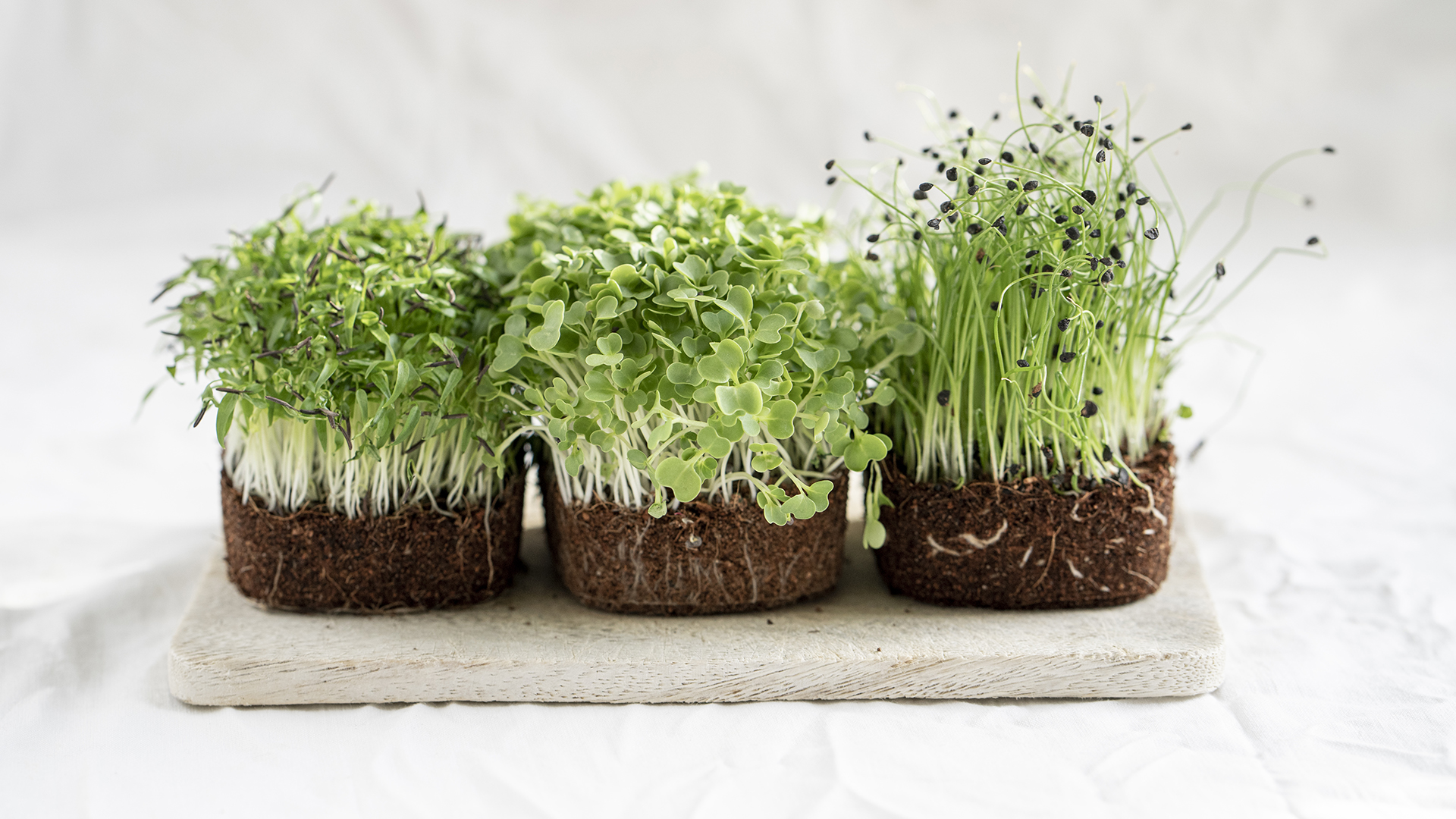

Learn how to grow microgreens for a fun, quick and easy way to add extra flavor and goodness to meals. Microgreens are essentially baby greens – such as lettuces, green vegetables and herbs – that are harvested while they are very young.
These trendy mini seedlings demand a premium at the grocery store, so growing them at home is a cost-effective way to add an upmarket restaurant-style garnish to dishes.
See: Kitchen garden ideas – easy ways to get started
There are so many benefits to growing microgreens. ‘They may be small, but it’s as if all the flavour of the mature plant is concentrated,’ says Alex Mitchell, author of Crops in Tight Spots.
‘They really do punch above their weight in the flavour stakes and are great sprinkled into salads and sandwiches. Some, such as bright red chard, beetroot leaves or frilly fennel, also look incredibly pretty on the plate.’
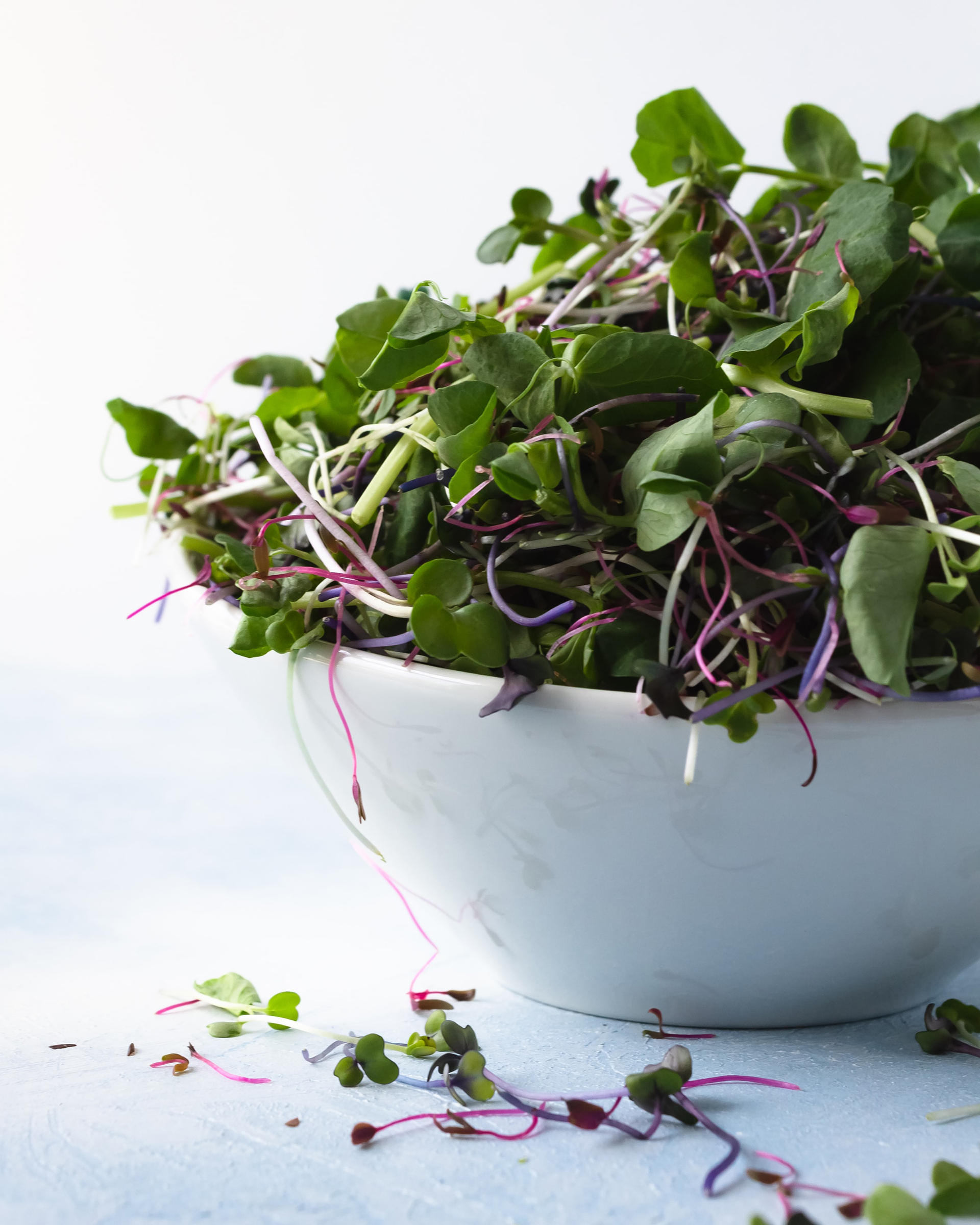
Belying their small stature, microgreens are packed with nutrients. ‘As young shoots, these are more nutrient-dense than their fully grown counterparts,’ says nutritionist Caroline Sherlock of Eat Drink Live Well.
‘For example, broccoli microgreens are thought to have up to 100 times the potency of the anti-inflammatory and anti-cancer compound sulforaphane when compared with an equivalent broccoli head.’
Design expertise in your inbox – from inspiring decorating ideas and beautiful celebrity homes to practical gardening advice and shopping round-ups.
Microgreens can be grown year round, and are the ultimate space-efficient crop – all you need is a sunny windowsill, and you can grow your own easy superfood in less than a week.
See: Small vegetable garden ideas – from layout design to the best crops to grow now
How to grow microgreens indoors
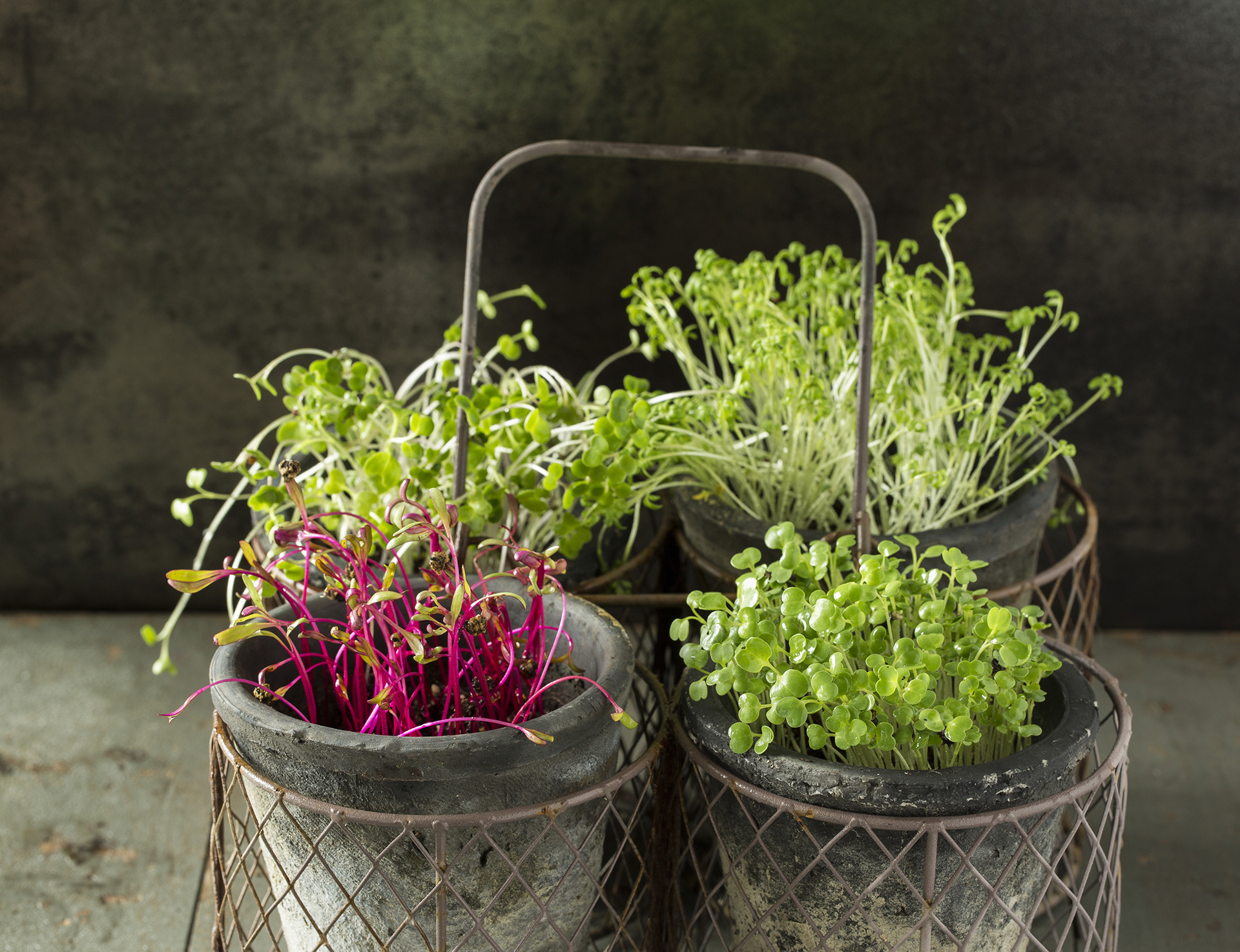
Learning how to grow microgreens indoors is incredibly easy, and takes little time, space or effort.
- Fill a seed tray – or other suitably sized container – with fine compost, and gently firm it down.
- Ideally you should use fresh compost, but you can grow in used compost as long as the previous plants were disease free. Enriching old compost with a small handful of chicken manure pellets will deliver your microgreens an essential dose of nitrogen.
- Next, sow your chosen seed. You can use just one type of seed or a mix of greens with similar growing times. ‘Sow your seeds thickly, so they are almost touching each other,’ says Mitchell. However, the seeds shouldn't be piled up.
- Cover the seeds with a thin layer of compost, then water through the rose of a small watering can – the flow should be light to avoid excessively disrupting the seed positions. You want the compost to be damp, but not overly wet.
- You can start seeds off under cover using a plastic bag or lid. This isn’t essential, but helps retain moisture and can speed things up. As soon as any of the seeds begin to germinate, you must remove the cover to avoid mold.
- Position the tray on a bright windowsill. In the depths of winter, you might find it helpful to use a grow light.
- Check your microgreens daily, and lightly water the moment the compost starts to dry out. It needs to be moist to ensure successful germination and growth.
- Once the seedlings are around 1-2 inches tall – which could take anything from a few days to three weeks – they are ready to harvest. ‘Or as a general rule when they have two sets of true leaves (not counting their ‘baby’ set of leaves, the ones they produce when they first appear),’ says Mitchell.
- Use scissors to cut them at their base, gently rinse them, then drain on kitchen paper before adding to meals.
- Sow a crop every week for a constant supply.
Types of microgreens
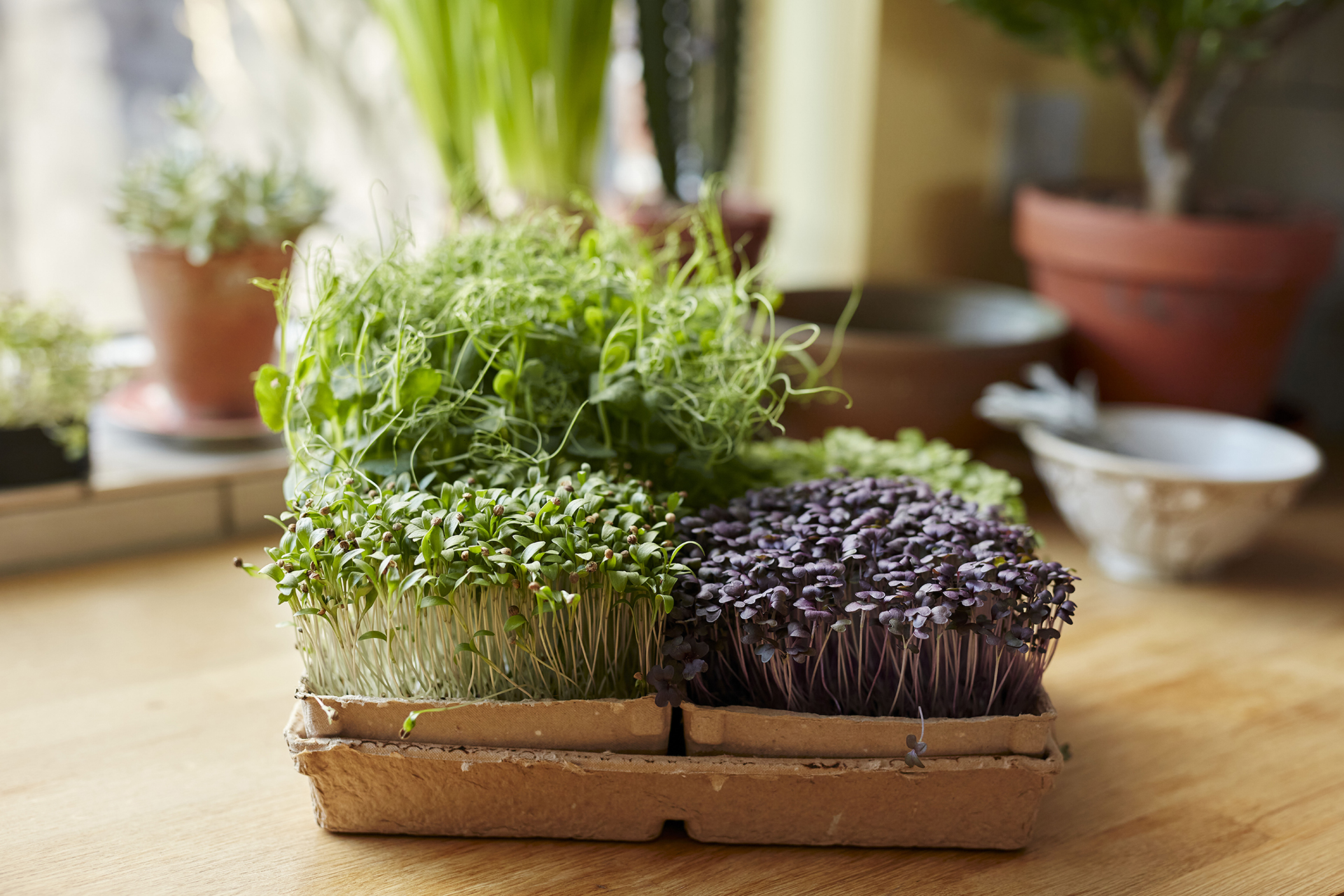
There are so many different types of microgreens you can grow, and you can get a lot of enjoyment from experimenting. Here are some of the best crops to try:
- Salad greens are some of the easiest microgreens to grow, and include lettuce, spinach, red-veined sorrel, rocket, mizuna, cress and watercress.
- Vegetables such as beetroot, broccoli, cabbage, carrots, celery, chard, kale, leaf beet, leek, peas, radish and sweetcorn.
- Herbs can take longer to germinate, but are full of flavor – try basil, chervil, cilantro, dill, fennel, flat-leaf parsley, mustard and purple perilla.
In order to successfully grow microgreens, you will need a lot of seeds, which can be expensive if bought in conventional small packets intended for full-size crops. Check the quantity of seeds in the packet – this can range from 20 to hundreds.
For larger quantities, you’ll need to look at other sources, such as trade suppliers or seeds supplied in bulk for cooking. ‘Try growing microgreens from coriander, fenugreek and mustard seeds from your spice rack,’ says gardening expert Jane Perrone.
See: How to grow cilantro – get the most out of this versatile, aromatic ingredient
How to grow microgreens without soil
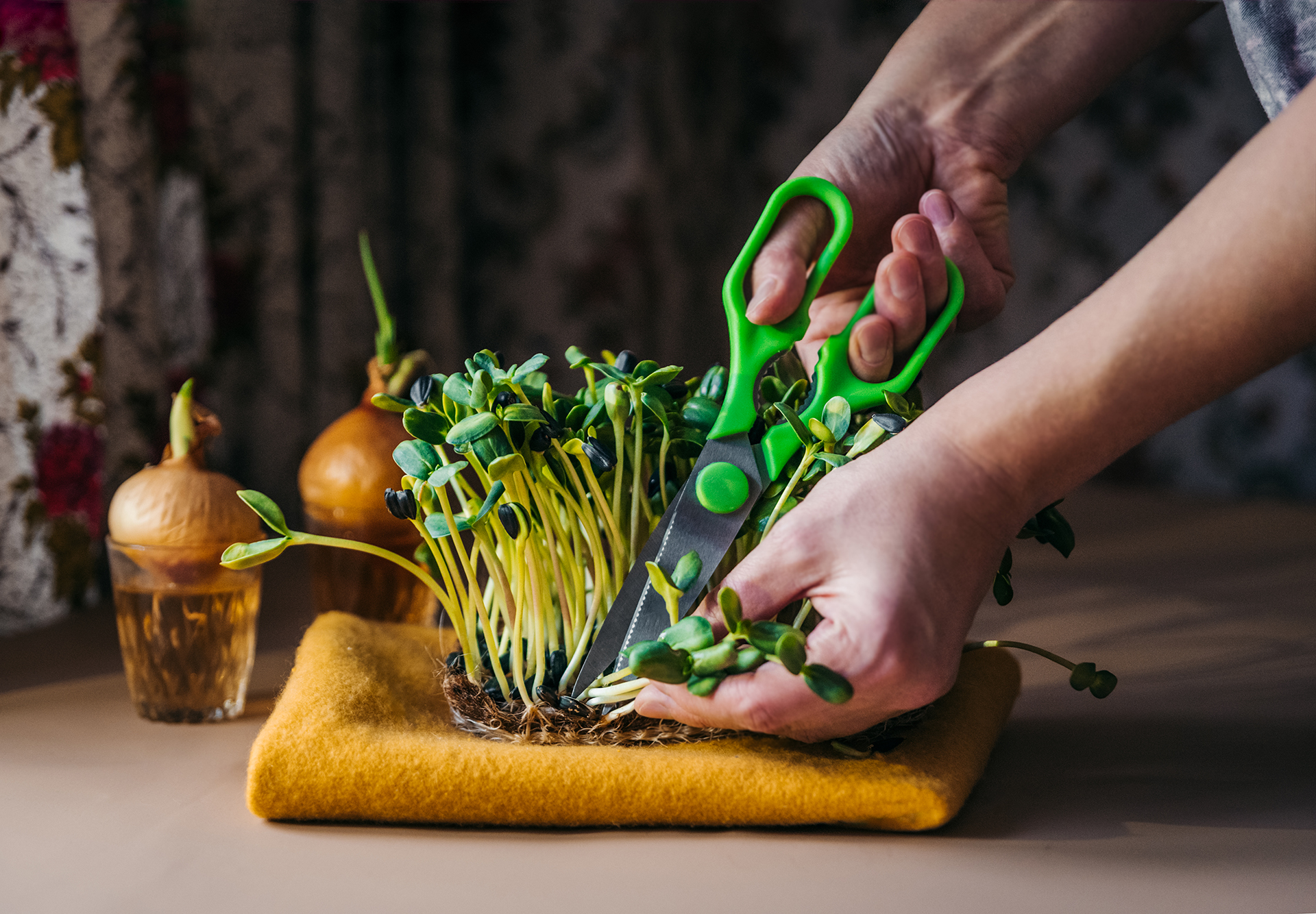
It’s possible to grow microgreens without soil – a technique known as hydroponics. Indeed, many professional growers use this method.
There are many options for growing mediums, ranging from coir and hemp growing mats, to gritty perlite, and even the humble kitchen paper towel (you’ll need to fold and layer a couple of sheets).
You simply place the growing medium in a tray, sow the seed on top and keep it moist while the seeds germinate and grow.
If you want to make life really easy, then invest in a hydroponics growing kit.
How to grow microgreens outdoors
Learning how to grow microgreens outdoors is best if you don’t want them on your windowsill. The method is the same for growing indoors, but you will need to first prepare the growing bed by enriching it with chicken manure pellets and raking the soil to a fine tilth.
Bear in mind that, when grown outdoors, precious seedlings are more prone to pests such as slugs and snails, as well as aphids and whitefly.
See: How to grow radishes – a colorful addition to the salad bowl
Do microgreens regrow after cutting?

Some microgreens will regrow after cutting, but many will not. In particular, peas will regrow as long as you cut them above the first shoot.
When harvesting microgreens you usually cut them close to the soil line, but if you want to attempt to regrow them, then you need to leave the lowest leaf on the seedlings. You also need to keep them in a sunny spot to enable photosynthesis to do its magic.
See: How to grow spinach – in pots, indoors or in raised beds
However, while it’s fun to experiment with trying to regrow microgreens after cutting, you may find the second crop to be less successful and more prone to issues such as mold. They're so fast to grow, it usually makes more sense to sow successionally.

Melanie has worked in homes and gardens media for two decades. Having previously served as Editor on Period Living magazine, and worked on Homes & Gardens, Gardening Etc, Real Homes, and Homebuilding & Renovating, she is now focusing on her passion for gardening as a Senior Editor at Gardening Know How. As a keen home grower, Melanie has experimented with pretty much every type of vegetable at some point – with mixed results. Often it is the simplest things that elude you, which may explain why she just can't seem to master zucchinis.